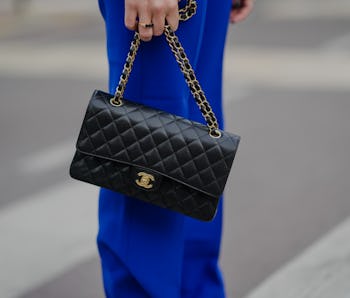Style
Want a Chanel bag? Better hurry, because they’re only getting more expensive
More exclusivity for the already hard-to-get handbags?

Chanel is getting back at everyone for all those advent calendar comments. The luxury brand initiated its fourth price increase in two years, affecting iconic handbags like the Classic Flap and 2.55.
According to a Bloomberg report, the price of Chanel’s small classic flap bag has gone up 60 percent since 2019, despite positive pandemic shopping trends. The 2.55, a larger version of the classic flap, rose from $7,400 in June to December’s $9,500, and a medium-sized flap bag in France trails 100 euros behind Hermès’s Birkin 30 in Togo calfskin. The medium size has come a long way since its $1,150 days in 1990, nearly an $8,000 difference, so why the price hike?
Not a rebranding — A Chanel spokesperson attributed the rising fees to “changes in production costs and raw material prices, as well as exchange rate fluctuations.” However, by increasing the prices in such a short time span, it seems Chanel is trying to boost its luxury status into another category altogether.
In addition to the new price tags, Chanel is adding stricter authentication technology and imposing a product limit in-store to prevent too much secondhand distribution. These new plans align with previous Rolex and Hermès strategies — each restricting the number of sales per visit. In the Korean and Parisian markets, customers are capped at how many Chanel bags they can purchase per year and per visit, respectively.
Consumers have caught on to high fashion reselling through sites like The Real Real and Vestiaire Collective, making brands like Chanel, Louis Vuitton, and Gucci more accessible to the average customer. This puts the brands at a disadvantage by potentially tarnishing the reputation of their quality since they don’t have any control over the marketing, condition of the item, or its price.
Chanel’s initiatives are more than likely an attempt to raise its personal exclusivity in the luxury market, though the brand is already known to be one of the most upscale. If the price increase and sale limit strategies work in building desirability, this may just be the tip of the iceberg.
As brands like Louis Vuitton, Gucci, and Fendi slip into the closets of the everyday buyer, Chanel might be trying to align itself with the big dogs like Hermès while it still can. Hopefully, the new prices mean we’ll be getting more than a mini dust bag in next year’s advent calendar.